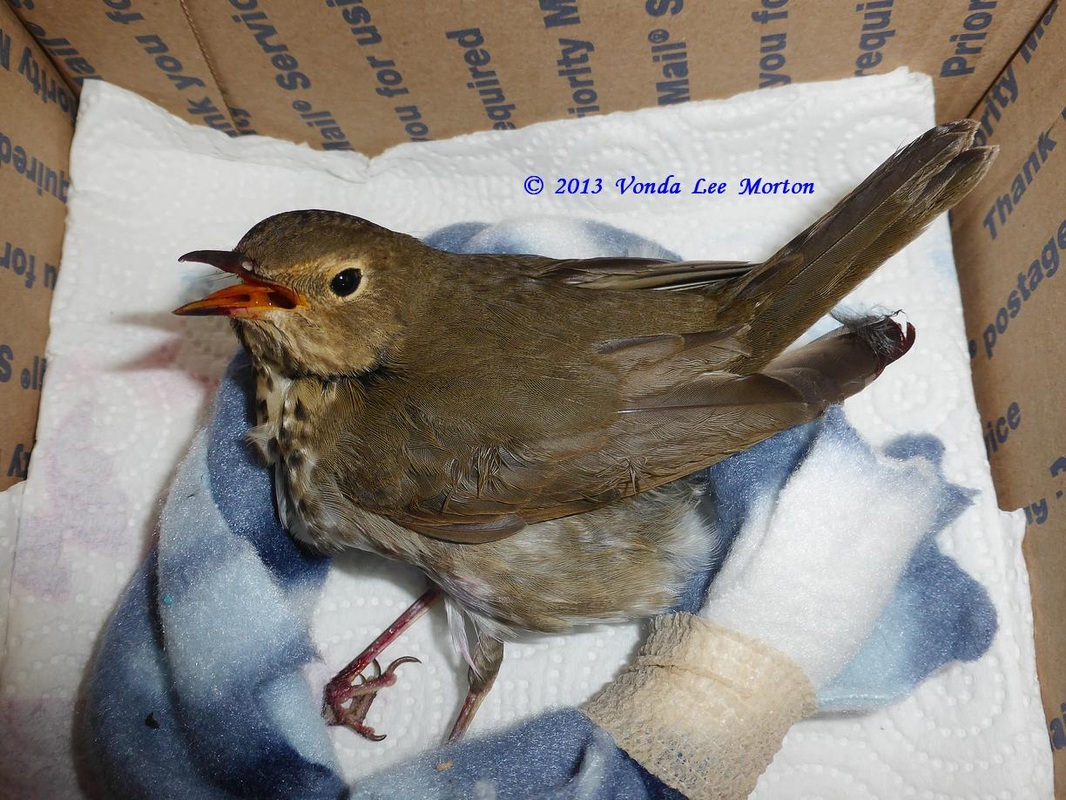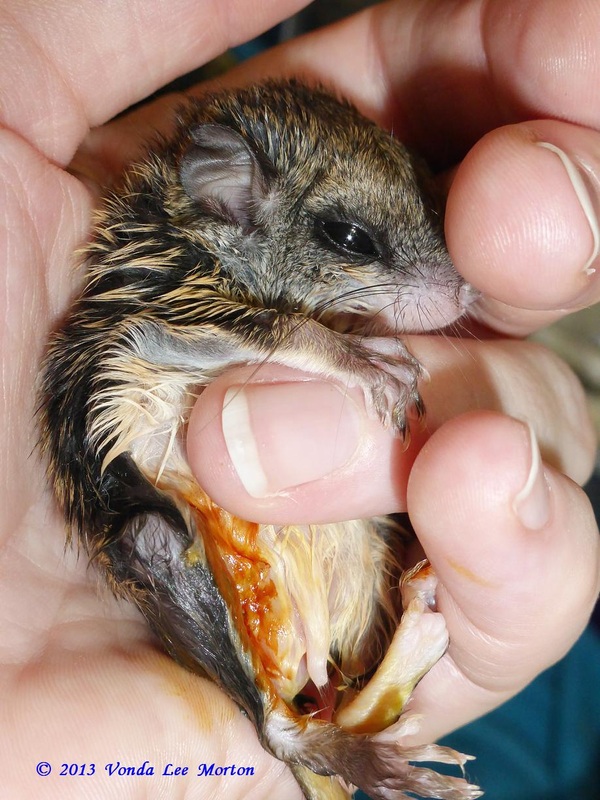First, the hermit thrush: this poor darlin’ was found on a sidewalk in Bibb County. We don’t have hermit thrushes year-round; they winter here.This sweet bird had probably been in the early wave of fall migration.
Based on the beak breathing but clear eyes and nose, I suspected a blown lung, probably from impact with a car or window. She also had some neurological issues going on: could poop but her legs were stretched out straight in front of her body. Vet Richie Hatcher of Smalley’s Animal Hospital and I, after x-rays showed no broken bones contributing to her distress and after he ruled out a blown lung, decided to give her a little time and see what happened. She was able to eat when hand-fed, so it was worth a try. You can always euthanize later, but once it’s done, you can’t take it back.
Two hours later, she had either a heart attack or seizure in my hands as I was about to feed her. We lost her that quickly. And yes, it sucked—big time. It’s never pleasant to lose a rehab; it’s worse when they die in your hands, and the unpleasantness is compounded when it’s a species you’re especially fond of…and I adore all members of the thrush family: wood thrushes, hermit thrushes, bluebirds, robins—the whole lot.
Fortunately, I did have the flyers to focus on. The little fellow with the puncture wound actually had an abscess form and migrate above the puncture, where it burst. The next day, one on his outer hip also burst. Vets Jim Hobby and Richie Hatcher explained it more or less thusly: antibiotics, which my little guy had been on from day one, aren’t actually effective until the abscess bursts; then the antibiotics can do their job. So he’s still on antibiotics, he gets an Epsom salt rinse after every feeding, and then he gets doused with Betadine. Needless to say, he’s not thrilled with his current regimen, but flyers are such sweet little souls that all he does is chitter a mild protest, jerk his little leg, and occasionally poop on himself from the discomfort—and I know it has to hurt to have salt water poured into an open wound, followed by Betadine. But the wounds are looking better, and he’s never lost his appetite or been in any way sluggish—in fact, he’s my heaviest eater!
In the video clip below he hides after being fed and having his wounds treated:
The photo below is a neat shot of their fur (in addition to being a handful of adorable!). See how oily it looks? But it’s soft as silk, despite that oily appearance. I’ve never come across an authoritative explanation for the oily look, which just goes to prove my oft-repeated argument that flyers haven’t received near the research attention that grays have. If any squirrel researchers out there are reading this, get off your duffs and start focusing some intensive research on flyers!




 RSS Feed
RSS Feed
